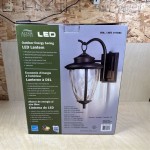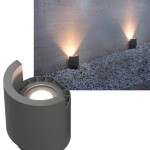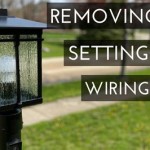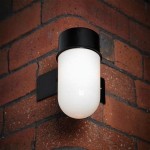How To Refinish A Wood Table For Outdoor Use
Refinishing an outdoor wood table breathes new life into weathered furniture, enhancing its appearance and extending its lifespan. This process requires careful preparation and the correct application of protective finishes designed to withstand the elements.
1. Preparing the Table Surface
Proper surface preparation is crucial for a successful refinishing project. Begin by cleaning the table thoroughly. A solution of mild detergent and water can remove surface dirt and grime. For more stubborn dirt or mildew, a solution of one part bleach to four parts water can be used, followed by a thorough rinse with clean water. Allow the table to dry completely before proceeding.
Next, old finishes must be removed. This can be achieved through sanding, chemical stripping, or a combination of both. Sanding is generally preferred for lightly weathered finishes. Start with a coarser grit sandpaper (e.g., 80-grit) to remove the bulk of the old finish and gradually move to finer grits (e.g., 150-grit, then 220-grit) for a smooth surface. For heavily layered or stubborn finishes, a chemical stripper may be necessary. Apply the stripper according to the manufacturer’s instructions, allowing sufficient time for it to work. Use a scraper to remove the softened finish, followed by sanding to smooth the surface. Always wear appropriate safety equipment, including gloves and eye protection, when working with chemical strippers.
Once the old finish is removed, inspect the table for any structural damage. Loose joints should be tightened or repaired using wood glue and clamps. Any rotted or damaged wood should be replaced. Fill any cracks or holes with an exterior-grade wood filler, allowing it to dry completely and sanding smooth before proceeding.
2. Choosing the Right Finish
Selecting the right finish is critical for protecting the table from the elements. Outdoor furniture requires a finish that can withstand sunlight, rain, and temperature fluctuations. Several options are available, each with its own advantages and disadvantages.
Oil-based finishes penetrate the wood, providing excellent water resistance and allowing the wood to breathe. They offer a natural look and are relatively easy to apply and repair. However, they require more frequent reapplication compared to other finishes.
Varnish provides a durable, hard finish that is resistant to scratches and water damage. It creates a more protective layer on the surface of the wood, offering longer-lasting protection. However, it can be more challenging to apply and repair compared to oil-based finishes.
Exterior paints provide a solid color finish and excellent protection from the elements. They offer a wide range of color options and can completely transform the look of the table. However, they can obscure the natural beauty of the wood grain.
Exterior wood stains offer a balance between protection and aesthetics. They penetrate the wood, providing color and enhancing the wood grain while offering some level of water resistance. They require less frequent reapplication than oil finishes but offer less protection than varnish or paint.
Consider the level of protection required, the desired aesthetic, and the maintenance requirements when choosing the right finish for your outdoor wood table.
3. Applying the Finish
Before applying the finish, ensure the table is clean and dry. Lightly sand the surface with fine-grit sandpaper (e.g., 220-grit) to create a smooth surface for the finish to adhere to. Remove any sanding dust with a tack cloth.
Apply the finish according to the manufacturer’s instructions. Most finishes require multiple coats for optimal protection. Apply thin, even coats, allowing each coat to dry completely before applying the next. Avoid applying thick coats, which can lead to drips, runs, and uneven drying.
For oil-based finishes, apply the oil with a brush or rag, working it into the wood. After a few minutes, wipe off any excess oil with a clean cloth. For varnishes and paints, use a high-quality brush or sprayer to apply thin, even coats. For stains, follow the manufacturer’s instructions, as application methods can vary.
Between coats, lightly sand the surface with fine-grit sandpaper to ensure a smooth finish. Remove any sanding dust before applying the next coat. Allow the final coat to dry completely according to the manufacturer's recommendations before using the table.
Proper application and drying times are crucial for a durable and long-lasting finish. Follow the manufacturer's instructions carefully for optimal results.

How To Re Wooden Outdoor Furniture The Honeycomb Home

Refinish Outdoor Wood Furniture Easy With Stain Artsy Rule

How To Re Wooden Outdoor Furniture The Honeycomb Home

How To Re Your Wood Furniture With Teak Oil Ramsle Glam

How To Refinish Outdoor Wood Furniture Baby Gizmo

How To Re Wooden Outdoor Furniture The Honeycomb Home

How To Re And Protect Outdoor Wood Furniture Love Grows Wild

How To Refinish Outdoor Wood Furniture With A Solid Stain

How To Make Old Outdoor Timber Furniture Look New Again Better Homes And Gardens

How To Refinish Outdoor Wood Furniture
Related Posts







